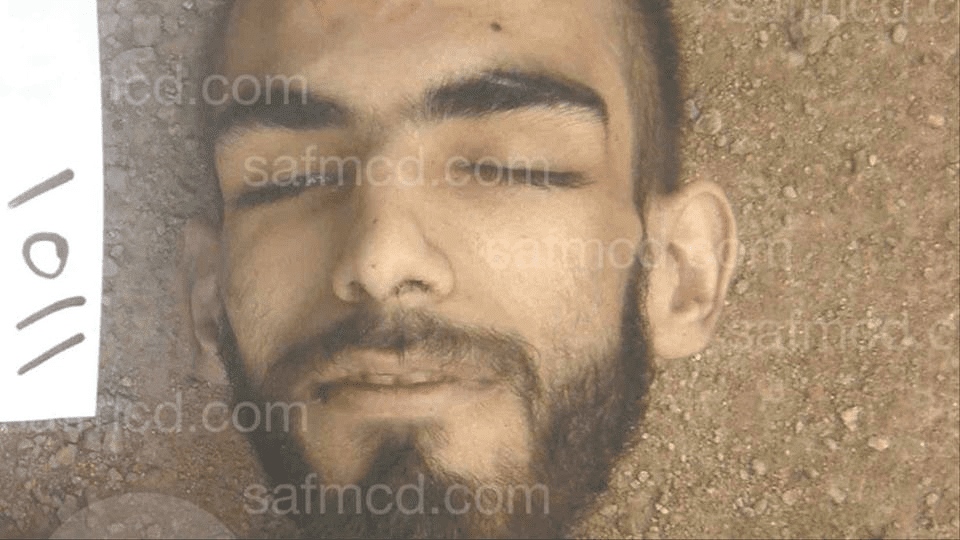Family searches through thousands of online photos of dead detainees to confirm their sons’ fate
One night in November 2012, regime forces raided the home […]
5 September 2016
One night in November 2012, regime forces raided the home of two teenage brothers living in Syria’s northwestern coastal province of Tartus and arrested them.
Ahmed Hathefa, 32, never heard from his younger brothers Rashad and Basheer again.
Six months later, released prisoners delivered news of Rashad’s death, which the family did not want to believe. There was no proof, they told each other.
“Although we told others that we thought they were dead, we still had a shred of hope that we lived by,” Hathefa, who says his brothers were arrested for peacefully demonstrating against the government, tells Syria Direct’s Bahira al-Zarier.
In 2014, Ahmed and his family found an opportunity to discover the truth.
In January of that year, a set of 28,000 photos of dead government detainees was smuggled outside Syria by a military defector, known by the pseudonym “Caesar.”
The photos were posted on various websites.
Ahmed and his family looked at thousands of photos of prisoners’ corpses until finding Rashad’s photo on the Syrian Association for Missing and Conscience Detainees’s website.

They never found Basheer, but later confirmed his death through a relative who had stayed in the same prison.
“We looked closely at every picture, at every face. We experienced their sufferings with them, the pain inflicted on them.”
Q: How did you feel as you went through thousands of pictures, looking for your brother?
I can’t describe how painful it was. Every member of our family looked through the pictures, hoping not to find Rashad or Basheer among them. We wanted to believe that they were still alive.
We saw hundreds of faces that we thought could be Rashad’s face; thousands of martyrs who we thought were Rashad.
They were other Rashads, with families who didn’t want to see the faces of their sons and brothers among these horrifying pictures.
We went through around 2,000 pictures; I’m not exaggerating.
We scoured through thousands of horrifying pictures, looking into the eyes of thousands of martyrs who were tortured in this oppressive regime’s prisons. We looked closely at every picture, at every face. We experienced their sufferings with them, the pain inflicted on them by this oppressive, terror-filled regime.
Then we saw Rashad’s picture. We recognized his face and his distinct facial features, like the scar on his eyebrow and the birthmark above his eye.
No words can describe what we felt.
We kept searching for Basheer’s picture, but to no avail. We never found him.
When our cousin, Omar, was released in 2015 after we paid a large sum of money to a regime official, as part of a “purchase deal,” he confirmed the days of their deaths. Rashad died on March 3, 2013 and Basheer on March 15, 2015.
[Ed.: A purchase deal is an agreement where prisoner’s relative pays a sum of money to a regime official in exchange for his or her release.]We haven’t received their bodies and we don’t know where they were buried. The regime didn’t inform us of their deaths.
We won’t be able to give them a last goodbye or kiss.
Q: Tell me about Rashad and Basheer. How were they arrested?
Rashad, who was 18, and Basheer, who was 19, were in high school at the time. They were arrested in mid-November 2012 at our house in Baniyas.
[Ed.: In May 2013, Syrian government and pro-government forces executed 248 people in Baniyas and a neighboring town, Human Rights Watch reported that year.]The boys were at home alone when security forces broke into the house and took them to the Tartus Military Security Branch. I don’t know how long they stayed there.
A detainee who was released in 2015 told us that they had been transferred to Branch 215 in Kafar Sousa, Damascus.
Q: Why were they arrested?
Basheer and Rashad were wanted because they were demonstrators and peaceful activists in the city. Rashad had been arrested three times prior to his last arrest.
Security forces had unsuccessfully tried to arrest Basheer before. He had been living outside for a while. When he snuck into the house that day to take a shower, he was arrested. From the moment Basheer and Rashad were arrested, like all detainees in Syria, we heard nothing official about them and their whereabouts.
Q: How did you know where they being held?
Everything we knew came from cellmates of Basheer and Rashad. About six months after their arrest, we began hearing news from released detainees that Rashad was dead.
The released prisoners didn’t have the courage to speak with us directly. They delivered the news through mutual acquaintances.
Q: People told you that Rashad was dead. Why didn’t you believe them?
Human beings hold onto hope. No one wants to believe that his loved ones are dead and that he won’t see them again.
Although we told others that we thought they were dead, we still had a shred of hope that we lived by. So when we heard about Caesar’s leaked photos, we began looking through the pictures that were published but we didn’t find anything.
We still had hope.
In March 2015, we finally found Rashad’s picture through the Syrian Association for Missing and Conscience Detainees. Their website organized pictures of dead detainees in a way that was easier to search through them.
[Ed.: The Syrian Association for Missing and Conscience Detainees, which refers to itself as a “human rights campaign to save the lives of thousands of innocent detainees and forcibly displaced people in Syrian prisons,” is a website which displays photos of deceased prison detainees.]






